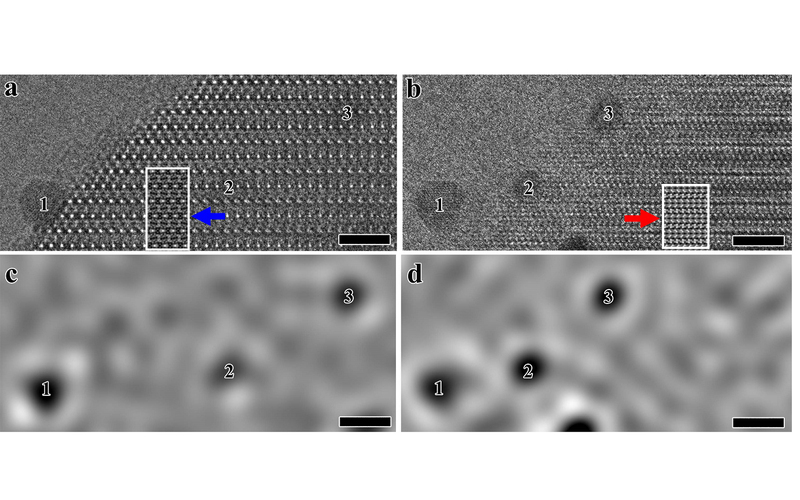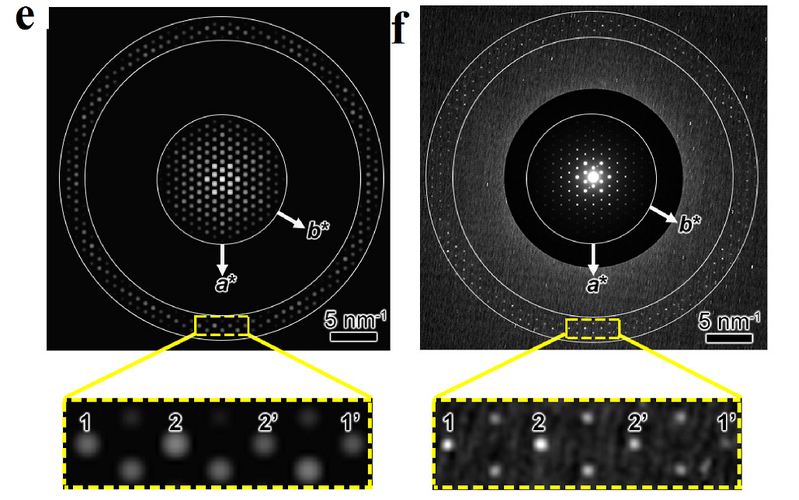Scientists from the ShanghaiTech University’s SPST have proposed two electron crystallography approaches for determining handedness of chiral zeolite nanocrystals. Their work was published in early May as an Advance Online Publication (AOP) in Nature Materials titled “Electron crystallography for determining the handedness of a chiral zeolite nanocrystal.” All three authors are from ShanghaiTech, and Assistant Professor Ma Yanhang is the first author.
If an object cannot be overlaid with its mirror image through translation or rotation operations, this object has chiral features. Chirality is commonly observed in organic and biological molecules such as sugars, lipid molecules and proteins. It also exists in inorganic crystals. In crystallography, single crystal X-ray diffraction (SXRD) is usually used to determine the absolute structure of a chiral crystal using anomalous scattering, which leads to the break of Friedel’s law. However, SXRD method is only applicable to single crystals larger than 5μm. It encounters difficulties when coming to nanosized crystals. The trial to synthesize enantiopure nanocrystals has been waiting for this efficient characterization method.
The two methods developed by Ma et al. are novel and elegant, and can be used for handedness determination of chiral nanocrystals. The handedness is identified through either a comparison of a set of two high-resolution transmission electron microscope (HRTEM) images, taken from the same nanocrystal but along different zone axes by tilting it around its screw axis, or the intensity asymmetry of a Bijvoet pair of reflections in a single precession electron diffraction (PED) pattern.
This work is a breakthrough in crystallography and electron microscopy science. It is of scientific and practical significance because it opens new ways to determine the handedness of small, chiral crystals.
Furthermore this paper was followed next day by a paper in PNAS.The two approaches have been applied for a chiral zeolite crystals synthesized by a rational design of structure directing agents (SDAs) to determine their handednesses. Enantiomerically enriched molecular sieves have been obtained and tested in enantioselective separation and catalysis. This work is a collaborative work with Professor Mark E. Davis at Caltech, USA.
This work has been financially supported by ShanghaiTech Startup Funding for Ma Yanhang.
Read more at: https://www.nature.com/nmat/journal/vaop/ncurrent/full/nmat4890.html
and: http://www.pnas.org/content/early/2017/04/25/1704638114


HRTEM images of a chiral zeolite along (a) [2-1-10] and (b) [1-100] zone axes (c) and (d) are processed images from (a) and (b) after Fourier filtering. A simulated (e) and an experimental (f) PED pattern of a chiral zeolite (P6122) along [0001].


